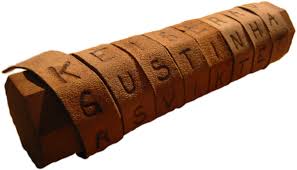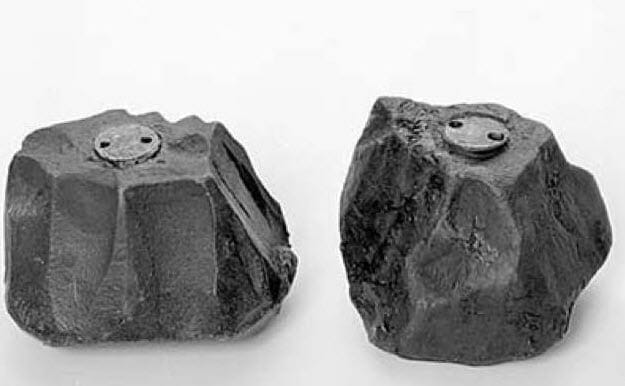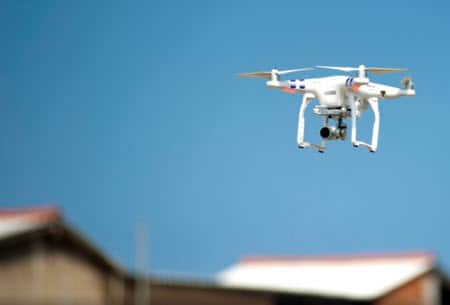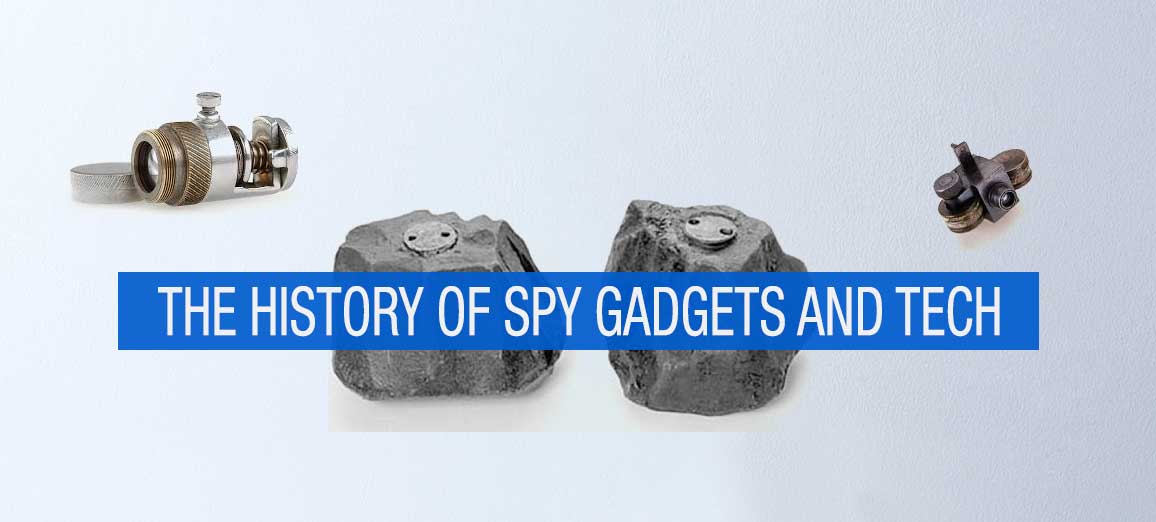Even though spy gadgets weren’t always as technologically advanced and inconspicuous as today, that’s not to say that they didn’t exist years ago. And they worked great, with some companies looking at older gadgets in order to build new ones that would work better.
But, how did they look like in the past? What are some of the most popular pieces of the history of spy gadgets? Partly thanks to the CIA declassifying around 600 out of the 20,000 objects that their operatives used throughout history, and due to some gadgets that weren’t that “secret”, we can take a look at what some of the most popular ones were. They date back from 500 B.C., and we’ll touch on some modern ones as well. Let’s begin.
Before the 1800s
 An ancient device in itself, ancient Greeks and Spartans often used scytales. A scytale is basically a cylinder that’s wrapped in parchment, with a message written on it. To decipher it, you would have to wrap the parchment around a similarly sized rod. In 1776, we had ‘Silver bullets’. They were similar in size to a musket ball, but they were hollow. This let them hide messages, and they could be easily concealed. After lead-based capsules caused death in spies who swallowed them, the materials changed and swallowing was possible. And, in 1778, we had what’s known as the ‘Sympathetic stain’. This required one chemical to pen a message, and another one to decipher it, using invisible ink. They used the ink to send secret messages from London to the Americas.
An ancient device in itself, ancient Greeks and Spartans often used scytales. A scytale is basically a cylinder that’s wrapped in parchment, with a message written on it. To decipher it, you would have to wrap the parchment around a similarly sized rod. In 1776, we had ‘Silver bullets’. They were similar in size to a musket ball, but they were hollow. This let them hide messages, and they could be easily concealed. After lead-based capsules caused death in spies who swallowed them, the materials changed and swallowing was possible. And, in 1778, we had what’s known as the ‘Sympathetic stain’. This required one chemical to pen a message, and another one to decipher it, using invisible ink. They used the ink to send secret messages from London to the Americas.
1800s and 1900s
 In 1864, an extremely popular device was the ‘coal torpedo’. It was basically a bomb, disguised to look like a piece of coal. Even though it was intended for trains and boats, no train attacks have been confirmed. However, it did bring down a number of ships. And, one of the most popular inventions is the pigeon camera. It was originally invented in 1907, but didn’t really pick up steam until 1916. It is a well known fact that pigeons were used for just about anything, especially carrying messages. However, during World War One, a small time-delayed camera was attached to pigeons. This let them capture hundreds of pictures during their flight. Pictures were incredibly detailed, thanks to the fact that pigeons fly low, compared to aircrafts.
In 1864, an extremely popular device was the ‘coal torpedo’. It was basically a bomb, disguised to look like a piece of coal. Even though it was intended for trains and boats, no train attacks have been confirmed. However, it did bring down a number of ships. And, one of the most popular inventions is the pigeon camera. It was originally invented in 1907, but didn’t really pick up steam until 1916. It is a well known fact that pigeons were used for just about anything, especially carrying messages. However, during World War One, a small time-delayed camera was attached to pigeons. This let them capture hundreds of pictures during their flight. Pictures were incredibly detailed, thanks to the fact that pigeons fly low, compared to aircrafts.
Then, we had the 1940s playing card map. Made by two US and British intelligence agencies, at first sight, it was nothing more than a playing card. However, when soaked, the card splits, revealing a map inside. A similar concept, even though much more advanced, was the fake monopoly board game. The game contained maps, compasses and files, which were disguised as common elements of the game. Unlike the regular sets, they had a red dot on the space marked as “Free parking”. In order to avoid besmirching the Red Cross, the British government actually set up fictitious charities to smuggle them in.
 Soon later, we had one of the most important spy cameras – the microdot camera. This was a tiny camera that could photograph a document, and produce a microdot that was often less than a millimeter in diameter. These tiny dots actually had quite a lot of information, but were easily concealable. In order to read them, you would need either a microscope, or a magnifying viewer, often disguised in a fountain pen or a cigarette.
Soon later, we had one of the most important spy cameras – the microdot camera. This was a tiny camera that could photograph a document, and produce a microdot that was often less than a millimeter in diameter. These tiny dots actually had quite a lot of information, but were easily concealable. In order to read them, you would need either a microscope, or a magnifying viewer, often disguised in a fountain pen or a cigarette.
1965 brings us the “kiss of death”. An item that was reportedly carried by KGB agents, it hid a 4.5mm firearm, inside of a lipstick tube. Another thing made by the KBG came five years later, in 1970 – the buttonhole camera. Today, this is fairly common, but it was really advanced for that age. It had a lens that was hidden in a buttonhole, and the release was hidden in the agent’s pocket. Very useful when you want to take a picture of something without even getting your hands out of your pockets. The “Bulgarian umbrella” is another example – a common umbrella whose tip was coated with poison. It was used to assassinate Georgi Markov, a Bulgarian dissident writer, back in 1978.
What do we have today?
 Maybe unsurprisingly, the spy gadgets we have today, are basically an evolution of the gadgets that were invented years ago. Technology has advanced, and things can be much smaller, with better functionality. One prime example are cameras. Hidden cameras can be found in things such as pens, wall clocks, and even in your peephole. Years ago, these things weren’t available, let alone with the quality we have today.
Maybe unsurprisingly, the spy gadgets we have today, are basically an evolution of the gadgets that were invented years ago. Technology has advanced, and things can be much smaller, with better functionality. One prime example are cameras. Hidden cameras can be found in things such as pens, wall clocks, and even in your peephole. Years ago, these things weren’t available, let alone with the quality we have today.
With the rise of computers comes the rise of keyloggers, too. A keylogger is a device that records every keystroke that users enter on a specific computer. In terms of gadgets, a keylogger is commonly between the keyboard cable, and a computer’s USB port. There were even some for PS2 ports, too. We also have software keyloggers, as well, which can also monitor any applications you’ve opened or websites you’ve visited.
There are also things such as pens with ink that can only be seen under UV light, and some truly high tech things, such as spy glasses or a night vision monocular with recording capabilities. These are all, as said earlier, an evolution of gadgets that have been available for years.
Wrapping things up
It is foolish to think that spy gadgets are something that only appeared recently. Intelligence and counter-intelligence agencies were here years ago, and even though today’s technology wasn’t available then, they did manage to find their way around that time’s limitations.
There were ways to send coded messages, there were ways to take photos and videos without being spotted, even weapons hidden in common-day objects such as lipsticks and umbrellas weren’t that uncommon. Granted, maybe they didn’t work as well as the spy gadgets we have today, but they did their job extremely well.
For more great articles like this one visit our homepage.

